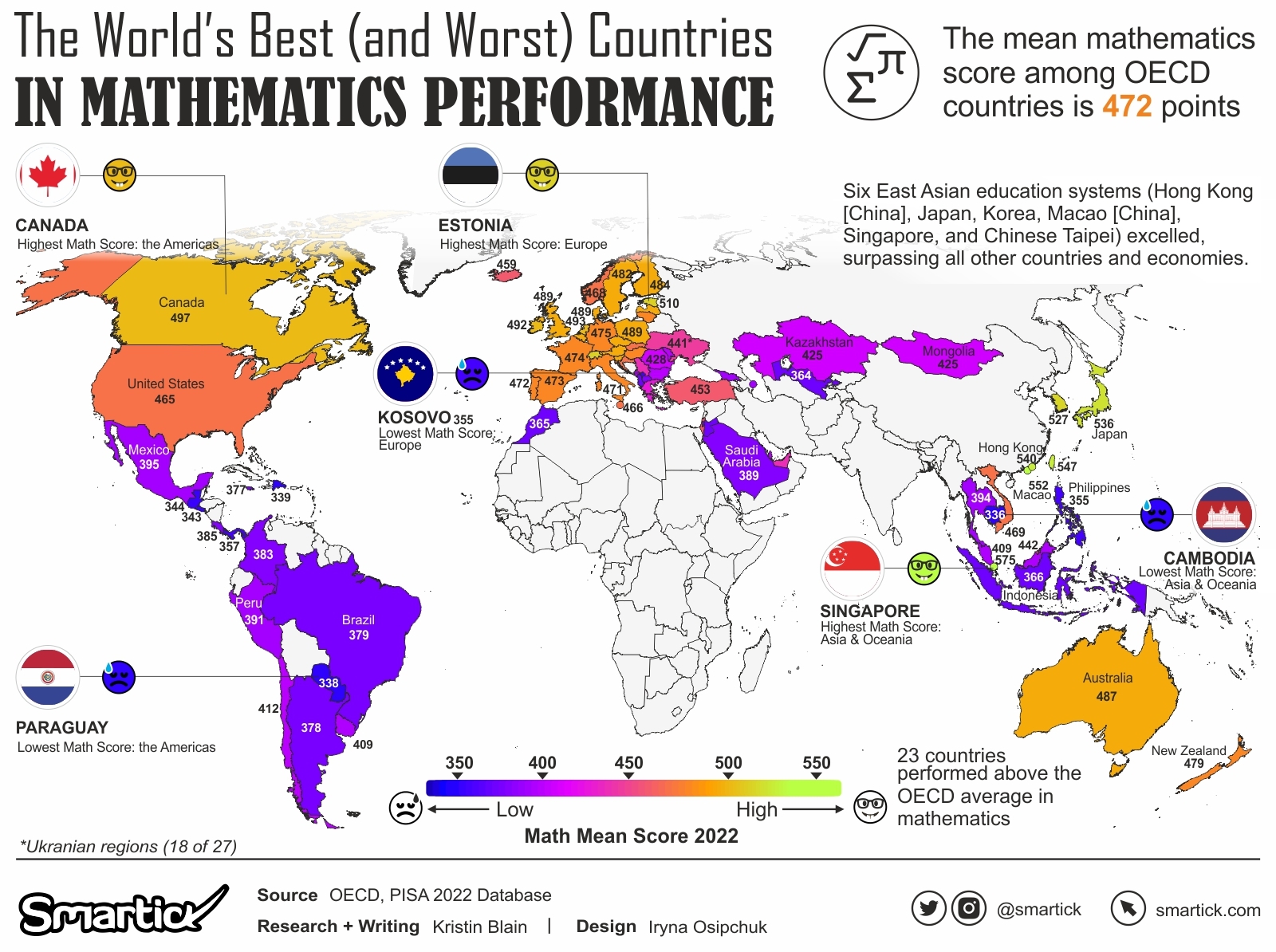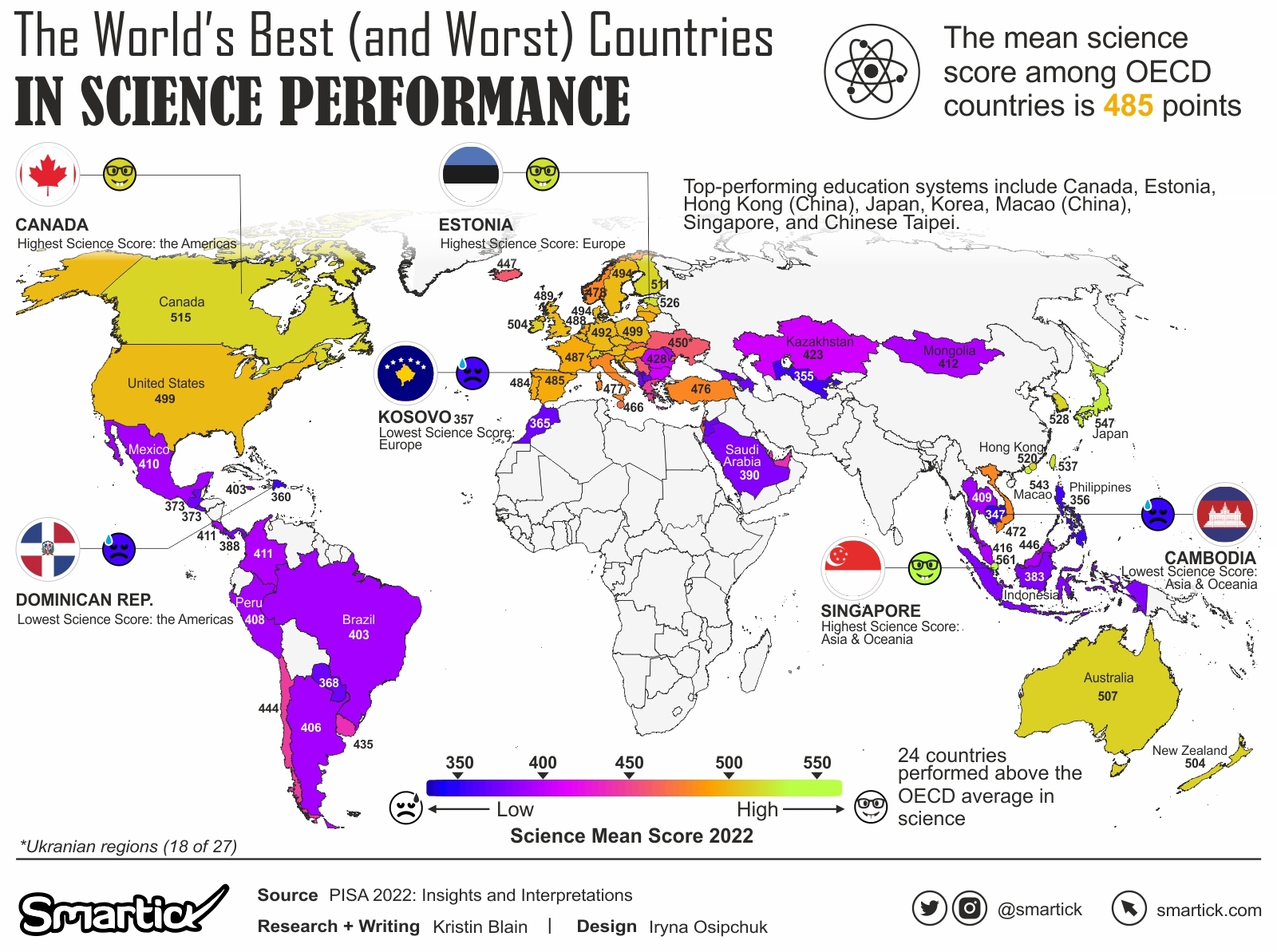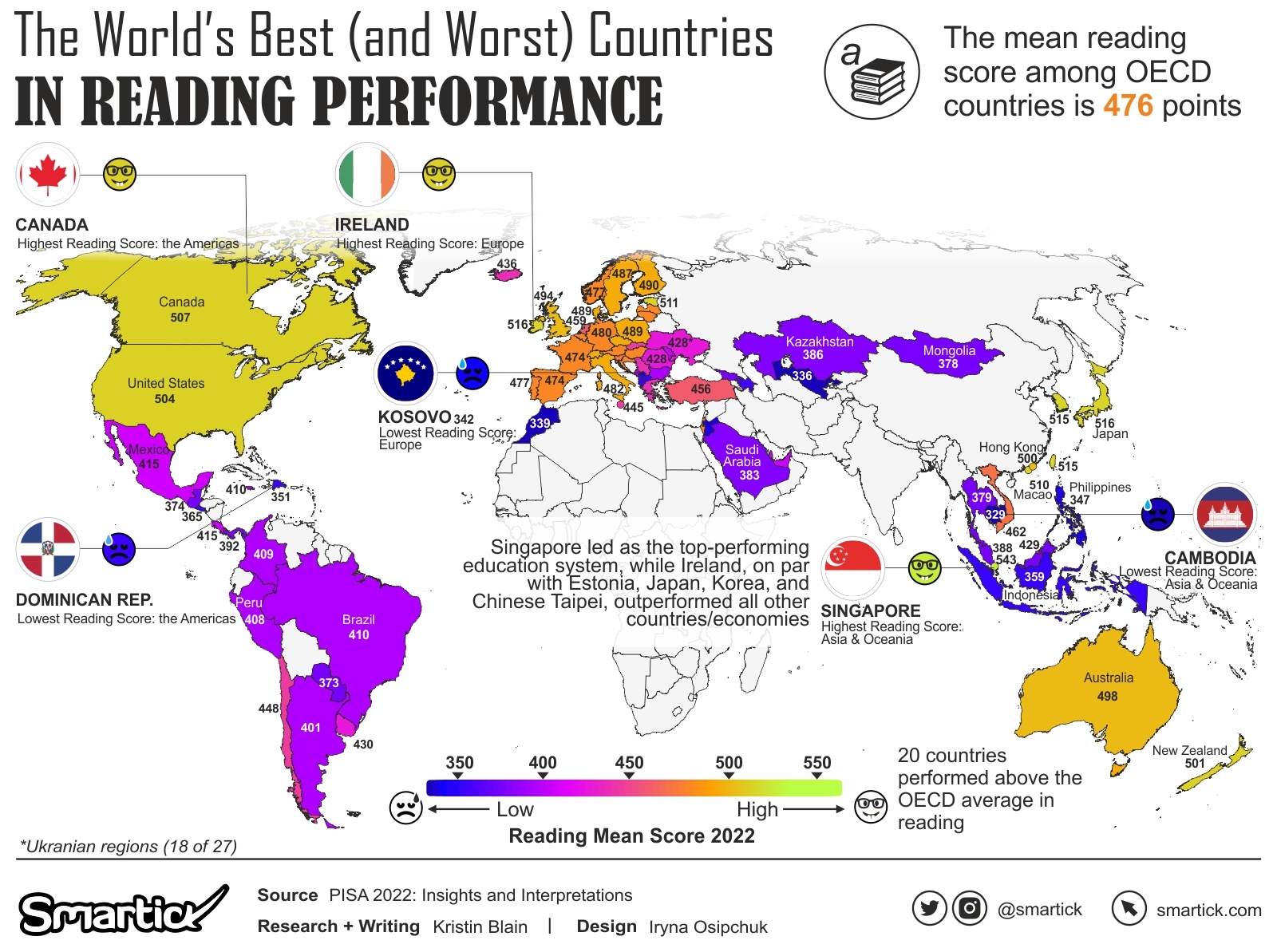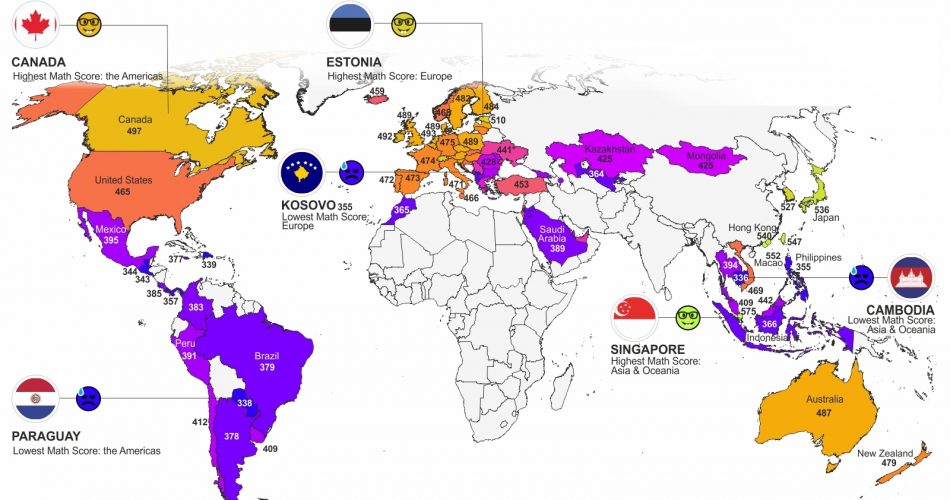
In a world where education shapes the future of economies, societies, and democracies, the Programme for International Student Assessment (PISA) has emerged as a crucial tool for understanding and comparing educational outcomes on a global scale. This article will explore mathematics, science, and reading performance in 81 countries, providing a comprehensive overview of key trends, challenges, and successes in the landscape of international education.
Unlocking Mathematical Literacy in PISA
In PISA, “mathematics performance” extends beyond equations. It’s how well a 15-year-old can apply math to describe, predict, and explain the world. It’s not just about the mean score; it’s about understanding math’s profound role in daily life. A mathematically literate student doesn’t just crunch numbers; they make informed judgments, crucial decisions, and contribute actively as a thoughtful citizen. This skill set goes beyond the classroom, empowering students to navigate the real world through mathematics. Check our map below for country performances and data insights.

Mathematics Highlights: PISA 2022
- The average mathematics score across OECD countries stands at 472 points.
- Singapore secures the top spot with an impressive score of 575 in mathematics.
- Strong performances are also observed in Macao (China) with 552 and Chinese Taipei with 547.
- Hong Kong (China), Japan, and Korea follow closely, each surpassing the 530-point mark.
- In 16 out of 81 countries/economies, over 10% of students attain Level 5 or 6 proficiency, showcasing advanced mathematical capabilities.
- Conversely, 42 countries/economies have less than 5% of students classified as high-performing.
- Globally, an average of 69% of students in OECD countries demonstrate at least basic proficiency in mathematics, indicating a practical application of math in real-life situations.
Unveiling Scientific Literacy in PISA
Scientific performance in the context of PISA evaluates the scientific literacy of 15-year-olds. It gauges their ability to utilize scientific knowledge for questioning, acquiring new insights, explaining phenomena, and drawing evidence-based conclusions on science-related matters. Check our map below for country performances and data insights.

Science Highlights: PISA 2022
- The average science score across OECD countries stands at 485 points.
- Singapore secures the top spot with an impressive science score of 561 points.
- Japan, Macao (China), Chinese Taipei, Korea, Estonia, Hong Kong (China), and Canada demonstrate outstanding performance in science.
- A total of 24 education systems surpass the OECD average in science scores.
- About 75% of students in OECD countries achieve basic proficiency in science, showcasing a strong foundational understanding.
- Across OECD countries, an average of 7% of students reached the highest proficiency levels.
- More than 10% of students in 14 countries/economies are top performers in science proficiency.
Exploring Reading Proficiency in PISA
In PISA, reading performance assesses the ability to comprehend, utilize, and contemplate written texts with the aim of attaining objectives, fostering knowledge and potential, and engaging effectively in society. The mean score serves as the benchmark for this evaluation. Check our map below for country performances and data insights.

Reading Highlights: PISA 2022
- The average reading score across OECD countries stands at 476 points.
- Singapore secures the top position in reading scores with an impressive 543 points.
- Japan, Macao (China), Chinese Taipei, and Korea join Singapore as high-performing countries in reading.
- About 75% of students in OECD countries achieve basic proficiency in reading, showcasing a strong foundational understanding.
- Across OECD countries, an average of 7% of students reached the highest proficiency levels.
- More than 10% of students in 13 countries/economies are top performers in reading proficiency.
Singapore’s Educational Triumph: A Leap Beyond OECD Averages
Singaporean students are not just proficient in mathematical models for complex situations but also excel in comprehending abstract texts and interpreting and evaluating complex experiments. Topping the charts in mathematics with 575 points, reading with 543 points, and science with 561 points, Singaporean students, on average, showcase an educational prowess equivalent to almost three to five years ahead of their peers who scored the OECD average of 472 in maths, 476 in reading, and 485 in science.
These outstanding results aren’t a fluke. Singapore is one of the few countries that not only maintained stability in mathematics performance but also showed improvement in reading and science since 2018. What’s truly remarkable is that this impressive educational performance has been achieved in a relatively short period. A closer look at older adults in Singapore, assessed separately by the OECD, reveals a stark contrast. Less than 17% of 55-65-year-old Singaporeans scored at Level 3 or higher in literacy in the OECD Survey of Adult Skills, while 63% of 16-24-year-olds achieved this – showcasing rapid educational progress.
Dominance in Mathematics: East Asian Excellence Shines
Beyond Singapore’s triumph, five other East Asian education systems emerged as mathematical powerhouses in PISA 2022: Macao (China), Chinese Taipei, Hong Kong (China), Japan, and Korea, showcasing a regional dominance in mathematical proficiency.
Global Educational Alarms: A Dip Beyond Pandemic Impact
While a few countries shine in education, the broader outlook raises concerns. In the span of over two decades of global PISA tests, the OECD average score has seen relatively stable trends between consecutive assessments. However, the latest cycle witnessed an unprecedented decline in performance. Compared to 2018, mean performance in OECD countries dropped by 10 score points in reading and almost 15 score points in maths – a nearly threefold increase in the usual consecutive change. This downturn was particularly pronounced in several countries. Notably, Germany, Iceland, the Netherlands*, Norway, and Poland, all experienced a decline of 25 score points or more in mathematics between 2018 and 2022, indicating a significant and simultaneous negative shock affecting multiple nations.
While the COVID-19 pandemic is an apparent factor influencing results in this period, a closer examination of the data reveals a more nuanced story. In reading, for instance, countries like Finland, Iceland, the Netherlands*, the Slovak Republic, and Sweden have witnessed students scoring lower marks for an extended period – in some cases, a decade or more. The negative trajectory in educational outcomes predates the pandemic, highlighting that long-term issues within education systems contribute significantly to the drop in performance. It’s not solely about COVID; underlying educational challenges are also at play.
As we conclude this initial exploration of PISA 2022, we invite you to stay tuned for the upcoming installments in our series of educational visualizations. In the coming weeks, we will delve deeper into specific aspects of international education, providing more insights, analyses, and visualizations to foster a comprehensive understanding of the global educational panorama.

